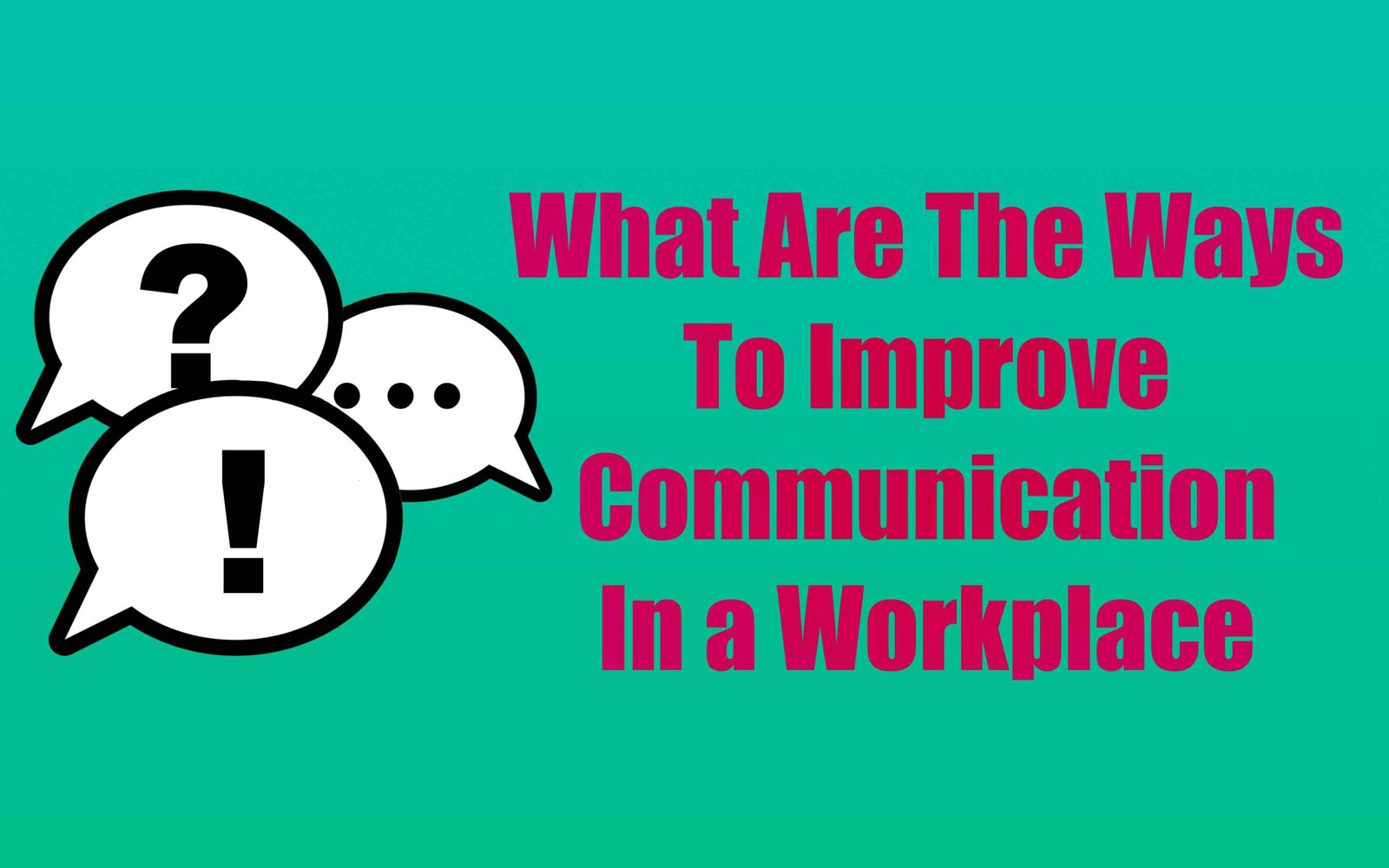Strong communication within the workplace is essential for the prosperity of every organization. Overcoming communication challenges stemming from diverse backgrounds and viewpoints and culture poses a significant obstacle. In today’s dynamic business environment, it is a norm for the remote and hybrid work arrangement, mastering effective communication is imperative for organizational success. Strong communication skills are cornerstone of efficient operations and sustainable growth across internal teams, HR departments and leadership teams.
What is workplace communication?
Workplace communication involves all interactions related to projects, responsibilities, and tasks including discussing individual responsibilities, sharing updates, or providing feedback. Effective workplace communication is vital for fostering collaboration, as unclear communication can lead to misunderstandings, confusion, or inadvertently creating conflicts.
Communication channels in the workplace occurs through various channels and this includes face-to-face discussions, written messages, team meetings , video conferencing tools, social media platforms. These interactions can occur in real-time or asynchronously, using email, recorded videos, or project management platforms.
What is effective communication?
Effective communication involves the clear and purposeful exchange of ideas, thoughts, and information to ensure understanding among all parties involved. This requires mastering various skills such as active listening, emotional intelligence, verbal and nonverbal communication.
Beyond simple conversation, effective communication also includes active listening and an understanding of interpersonal dynamics. By honing these skills, individuals can bridge gaps, facilitate informed decision-making, and cultivate stronger relationships.
What makes workplace communication effective?
There are several key principles for the improvement of workplace communication to enhance effectiveness. One of the key principles is prioritizing clarity, ensuring that the messages are easily understood, avoiding ambiguity or complexity. Effective communication remains relevant to the audience and context, addressing specific needs and concerns. Active listening is a critical element of effective communication, fostering mutual understanding through attentive understanding of verbal and nonverbal cues. Promoting feedback and two-way dialogue facilitates clarification and validation, resolving any misunderstandings that may arise.
In effective workplace communication, empathy plays a vital role as it considers the emotions, perspectives, and experiences of the audience, fostering connection and trust. Timely and responsive communication addresses issues promptly, preventing confusion or delays. Furthermore, fostering a positive and inclusive environment involves respecting the dignity, opinions, and boundaries of all parties involved. Adaptability ensures that the message resonates with diverse audiences by accommodating various communication styles and preferences. Ultimately, effective communication serves a clear purpose, be it informing, persuading, collaborating, or resolving conflicts.
Read: Creative Learning Hacks for Busy Professionals
Benefits of effective communication in the workplace
Effective workplace communication offers numerous advantages for organizations. These benefits includes:
Conflict Resolution:
Effective workplace communication is vital for resolving conflicts within the organization. By ensuring clarity and consistency in communication, misunderstandings and discrepancies in expectations can be minimized.
Employee Engagement:
By facilitating open lines of communication and addressing their goals and need, effective communication fosters better engagement among employees. The management can recognize and leverage employees’ skills and talents effectively, this can increase employee satisfaction and a healthier company culture.
Productivity Enhancement:
To have clear communication of roles and expectations empowers employees to understand their responsibilities and perform efficiently. Providing the access to necessary information and resources, this increases productivity and enables the employees to contribute effectively to the organizational objectives.
Client Relationship Improvement:
Effective communication helps to strengthen client relations, enhancing trust and loyalty. Maintaining clear and consistent communication helps in building trust, loyalty and retention, enhancing the organization’s reputation.
Healthy Workplace Culture:
To create a positive work environment, open communication is essential to foster inclusivity and respect for diverse perspective. Constructive conflict resolution contributes to a healthy work culture where employees feel valued and understood.
Employee Direction:
Effective communication provides clarity on roles and responsibilities, empowering employees to make informed decisions. This clarity contributes to the organization’s success by enabling employees to fulfil their duties effectively.
Job Satisfaction Enhancement:
Prioritizing effective communication can lead to higher levels of employee job satisfaction. Having a transparent and trustworthy communication environment promotes a harmonious workplace, boosting the morale and retention.
Innovation Promotion:
Open communication promotes employees to share ideas and opinions, fostering innovation. Contribution of valuable insights and solutions drives organizational growth.
Team Trust Building:
Communication plays a crucial role in building and maintaining trust among team members. Clear communication ensures alignment regarding expectations and responsibilities, fostering collaboration and cohesion within the team.
Positive Public Image:
Companies excelling in communication have a positive public image, attracting talent and stakeholders. Effective communication increases interest from investors and contributes to the organization’s overall success and growth.
Strategies for Improving Workplace Communication
Fortunately, enhancing workplace communication doesn’t necessarily demand extensive resources or time commitments. There are numerous strategies available, ranging from refining communication methods to establishing structured processes. Additionally, fostering an environment conducive to open communication can significantly improve interaction among team members. Here are ten actionable tips to enhance your communication skills.
Schedule Regular One-on-One Meetings:
Conducting frequent private sessions allows employees to express concerns and set goals, demonstrating a commitment to valuing their input and fostering trust.
Host Weekly Team Meetings:
Organize regular team gatherings to discuss objectives, address challenges, and promote collaboration. Encouraging open dialogue and participation enhances transparency and team cohesion.
Document Clear Expectations:
Ensure clarity by documenting responsibilities and sharing them promptly. Clear communication of job expectations promotes accountability and prevents misunderstandings.
Cultivate Psychological Safety:
Create a supportive environment where employees feel comfortable expressing ideas and feedback without fear of judgment. Leading by example and actively listening to concerns builds trust and openness.
Provide Task Context:
Communicate the significance of assigned tasks to reinforce their connection to broader goals. Transparent communication about task purposes enhances engagement and motivation.
Offer Constructive Feedback:
Provide feedback based on observations to help employees grow. Encouraging dialogue and collaboration fosters a culture of continuous improvement.
Foster Two-Way Communication:
Promote inclusivity by encouraging employees to share their perspectives and ideas. Actively listening to feedback and involving employees in decision-making enhances engagement.
Build Personal Connections:
Establish rapport by showing genuine interest in employees’ well-being beyond work-related matters. Strengthening personal connections fosters trust and team unity.
Utilize Communication Tools:
Make use of messaging platforms and video conferencing tools to facilitate seamless communication among remote and in-person teams. Embracing technology, it enhances collaboration and bridges communication gaps.
Implement Confidential Feedback Channels:
Provide avenues for employees to share confidential feedback to address sensitive issues and improve organizational culture. Regularly seeking employee input promotes transparency and continuous improvement.
Read: The Power of Microlearning: How 15 Minutes a Day Can Change Your Life
Effective workplace communication is an ongoing endeavour that requires commitment from all levels of the organization. Prioritizing clear, transparent communication enhances productivity, morale, and overall success.



